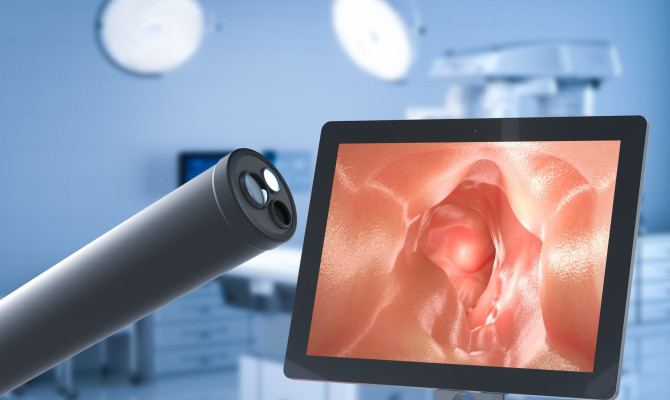Laminectomy: Indications, Procedure and Recovery

- Laminectomy
- 22 Aug 2023
Overview
What is Laminectomy?
Laminectomy is a surgical operation in which the lamina, a flat, thin piece of the vertebral arch, is removed from the vertebral bone. This surgery is frequently carried out to release pressure from the spinal Canal on the spinal cord or spinal nerves.
This article delves into the complex realm of laminectomy and examines its goals, the diseases it treats, and the surgical methods used. We also discuss the healing process in more detail, emphasizing the significance of postoperative care. We hope that by acquiring thorough knowledge, we can shed light on this and how it affects the lives of those with crippling spinal disorders.1Overview| Researched based study from Nlm.nih.gov

Uses
Who needs a Laminectomy?
It might be advised for those who have spinal disorders that cause the spinal cord or spinal nerves to get compressed. Several such signs include:
- Vertebral stenosis
- Herniated disc
- Spinal tumors
- Degenerative disc disease
- Spondylolisthesis
- Traumatized spinal cord
- Cauda Equina syndrome
Vertebral stenosis
- This is categorized by spinal canal narrowing, which may cause compression. Age-related degenerative changes in the spine, such as ligament thickening or the emergence of bone spurs, may possibly be the cause.
Disc herniation
- Intervertebral discs have a soft interior that protects the spinal cord or nerves by penetrating their hard exterior. Surgery may be carried out to reduce the pressure the herniated disc brings, but it can result in pain, numbness, and weakness.
Spinal tumors
- Tumors that grow in or around the spine may strain the benign or malignant area. A laminectomy could be used as part of the therapy plan to get rid of the tumor and ease the compression.
Degenerative disc disease
- This disorder causes the intervertebral disc to gradually degenerate, resulting in a smaller disc and a possible risk of nerve compression. The operation might be considered if conservative measures haven’t brought about enough relief.
Spondylolisthesis
- As a result of one vertebra moving forward over the next, the spine becomes unstable, and nerves are compressed. It may be used with spinal fusion to stabilize the injured segment.
Traumatized spinal cord
- A severe spinal injury, such as a fracture or dislocation, can result in bone fragments or displaced vertebrae compressing the spinal cord or nerves, requiring immediate medical attention.
Cauda equina syndrome
- This uncommon but serious condition involves compression of the cauda equina, a group of nerves near the base of the spinal cord. Laminectomy can be urgently needed to avoid long-term neurological damage.
Understanding that the surgery is not always necessary for people with these disorders is essential. Individual treatment plans are chosen after considering the severity of the symptoms, the response to conservative therapy, the patient’s general health, and their preferences.2Uses| Researched based study from Researchgate.net
The Process
Understanding the process of Laminectomy
The primary objective is to expand the spinal Canal. The spinal cord and nerve roots are found in the spinal Canal, which passes through the center of the vertebrae and resembles a tunnel.
This Canal can occasionally narrow down due to numerous disorders, placing pressure on the cord and nerves and causing pain, weakness, and other symptoms.
In Laminectomy Procedure steps are as follow:
Anesthesia
- The patient receives anesthesia before surgery to achieve complete unconsciousness and painlessness throughout the treatment.
- The surgeon makes a little incision on the back above the injured area of the spine. The exact vertebrae that require therapy determine where the incision should be made.
Lamina removal
- After making the necessary incisions, the surgeon carefully removes the lamina, a small piece of the spinal bone.
- The Canal is covered by the lamina, which resembles a flat Bony roof. The surgeon can enter the Canal and release the pressure by removing a portion.
Relieving pressure
- Any things that need to be relocated or removed immediately to make room once the lamina is removed include herniated discs and bone spurs.
Closing the wound
- The surgeon closes the incision with stitches or staples after making the necessary adjustments.
Recovery
- Following the procedure, the patient is taken to a recovery area where they can regain consciousness.
- The medical team will keep a tight eye on them. Patients may occasionally need to remain in the hospital for a brief observation period.5Procedure| Researched based study from Sciencedirect.com
Postoperative care
Postoperative care and recovery
Hospital stay
- The patient’s stay in the hospital depends on their condition and how complicated the surgery. A few days to a week are possible.
Treatment of pain
- Following surgery, pain is typical, and your doctor will likely prescribe painkillers.
Taking care of wounds
- Dry off and keep the surgical wound area clean. Follow your surgeon’s instructions to change your clothes and take a bath. Any infection-related symptoms, such as redness, swelling, warmth, or discharge, should be mentioned to your doctor.
Movement and flexibility
- Limit mobility and avoid activities that could strain your back for several days after surgery. As you recover, your doctor or physical therapist will offer advice on gradually increasing your mobility.
Brace usage
- To provide additional support during the initial phases of healing, your doctor could advise wearing a back brace.
Limit the heavy lifting.
- As directed, refrain from carrying heavy objects for a specific time. Lifting incorrectly might hurt your back and delay recovery.
Physical exercise
- Sticking to the suggested exercises and rehabilitation program is crucial once your surgeon gives you the all-clear to start physical therapy. Flexibility, strength, and overall function are all enhanced by this.
Follow-up consultations
- Attend all of your scheduled follow-up appointments so that they can monitor your development, modify your treatment plan as needed, and address any issues you may have.
Healthy diet
- A balanced diet full of vitamins and minerals and rich in nutrients supports the healing process.
Stop smoking
- If you smoke, you might want to think about giving it up because it might slow wound healing and raise the likelihood of problems.
Sleep and rest
- Make sure you receive enough sleep and relax.
How long does the laminectomy last?
- The complexity of the treatment, the number of involved vertebrae, and the doctors’ skills can all affect how long it takes. A laminectomy procedure typically lasts one to three hours on average.
Complications

Laminectomy complications
Infection
- There is a chance that an infection will spread to the surgical site. This infection may be superficial or, in rare instances, deep, affecting the tissues or bone around the spine.
Bleeding
- There is a chance of bleeding during surgery, which could result in a hematoma in the surgical area. Additional medical assistance may be needed if the bleeding is severe.
Nerve injury
- A slight chance of nerve injury exists, which could lead to new or worsening neurological problems.
Blood clots
- Blood clots in the legs, lungs, or both may become more likely as a result. It may be lethal if not treated immediately.
A leak of spinal fluid
- The spinal cord’s protective sheath may be pierced in some circumstances, causing a spinal fluid leak. Headaches may result from this, and additional surgery may be needed.
Field back surgery syndrome
- Patients with Field Back Surgery Syndrome may have pain or other symptoms for some time after their procedure. Multiple factors could contribute to the disease known as failed back surgery syndrome.
Scar tissue formation
- Recurrent symptoms can result from scar tissue forming around the surgical site after surgery and may pressure the nerves.
Anesthesia-related risk
- General sedation carries a risk profile, including adverse effects, respiratory troubles, and cardiovascular issues.
Rare complications
- Although uncommon, other possible consequences include drug allergies, complications from anesthesia, and other unanticipated medical conditions.
Remembering that individual characteristics can affect the likelihood of experiencing difficulties is vital.3Complications| Researched based study from Nlm.nih.gov , 4Complications| Researched based study from Nlm.nih.gov
Any feedback on this article?
 This Articles content was accurate
This Articles content was accurate Very Informative Article
Very Informative Article I have a question or a comment
I have a question or a comment
 This article contains inaccurate content
This article contains inaccurate content This article was not helpful
This article was not helpful I have a question or a comment
I have a question or a comment
We appreciate your helpful feedback!
Checkout our social pages
References
-
National Library of Medicine
Laminectomy | Overview
-
Research Gate
Laminectomy | Uses
-
National Library of Medicine
Clinical and surgical outcomes after lumbar laminectomy: An analysis of 500 patients | Complications
-
National Library of Medicine
Predicting Discharge Placement and Health Care Needs After Lumbar Spine Laminectomy | Complications
-
Science Direct
Laminectomy | The Process



































